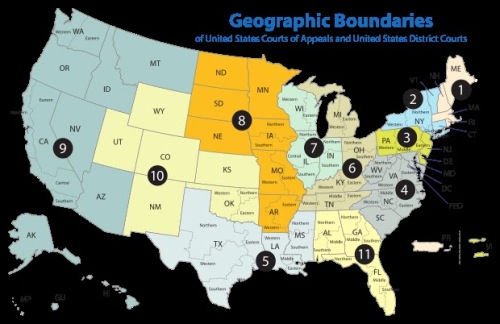
We’re a week into the Biden Administration, and, so far, things are off to a slow start, at least on the confirmation front. Unlike the relatively swift pace of confirmations that kicked off the Bush and Obama Administrations, the Senate has, thus far, confirmed just four nominations, matching the pace set under President Trump. What has moved fast, in contrast, is the pace of judicial vacancies, as a total of 17 federal judges (1 circuit; 16 district) have either moved to senior status or announced their departures in the past week. With the number of judicial vacancies growing rapidly, it’s worth asking when the White House will start nominating judges.
The process before a nominee is sent to the senate is fairly extensive. For district court judges, it typically starts with a recommendation made by a home-state senator or representative. Some senators will solicit applications through a public process, while others recommend based on references or pre-existing relationships. The Biden Administration has instructed Democratic Senators to submit recommendations for existing vacancies by January 19. While not many senators have met that deadline, it’s safe to say the White House has at least a few names to begin considering.
After the recommendation, the nominee is submitted to the Department of Justice for vetting, where the Office of Legal Policy reviews the nominee’s background, character, and experience. This process can be lengthier or shorter depending on the nominee, but will typically take at least a few weeks. Simultaneous to this process, the nominee will also undergo review by the Federal Bureau of Investigation.
If multiple candidates for a vacancy go through the vetting process, the White House must select who will be the primary candidate. Assuming that no issues have arisen during the vetting process, the nominee can then be formally announced and submitted to the Senate.
One wrinkle is that most Administrations (barring only the second Bush and the Trump Administrations) would submit their nominees to the ABA for evaluation before sending the nominee to the Senate. The Biden Administration, to my knowledge, has not made any announcement as to whether they will participate in the ABA pre-nomination vetting process. If they do so, the ABA process can further delay a nomination being sent to the Senate. Even if they don’t, the process is still likely to take a couple of months, at the fastest.
In other words, assuming senators have complied with the White House’s request and have submitted their recommendations by January 19, we can expect nominees coming out in March and April.
While this may seem like a long time, March is actually relatively fast for Presidents to nominate their first judges. President Carter nominated his first district court judge on March 29th of his first year, and his first appellate nominee on August 16. President Reagan’s first nominees hit the Senate on July 1st of his first year, and, while President George H.W. Bush renominated a few of his predecessor’s picks in February, he did not make his own nominations until August 4. Similarly, President Clinton’s first lower court nominations were made on August 6 of his first year. President George W. Bush got out his first nominees in May, while President Trump got his first appellate nominee, Judge Amul Thapar, to the Senate on March 21, 2017. Surprisingly, despite criticism for the slowness of his nomination pace, President Obama got his first nominee to the Senate the fastest in modern history, nominating Judge David Hamilton to the Seventh Circuit on March 17, 2009.
Nonetheless, it’s possible that President Biden’s appellate nominees may be announced sooner, as the vetting process on them may have begun before January 19. As such, depending on the vetting process, we may well see some nominees to the appellate seats as early as mid to late February.